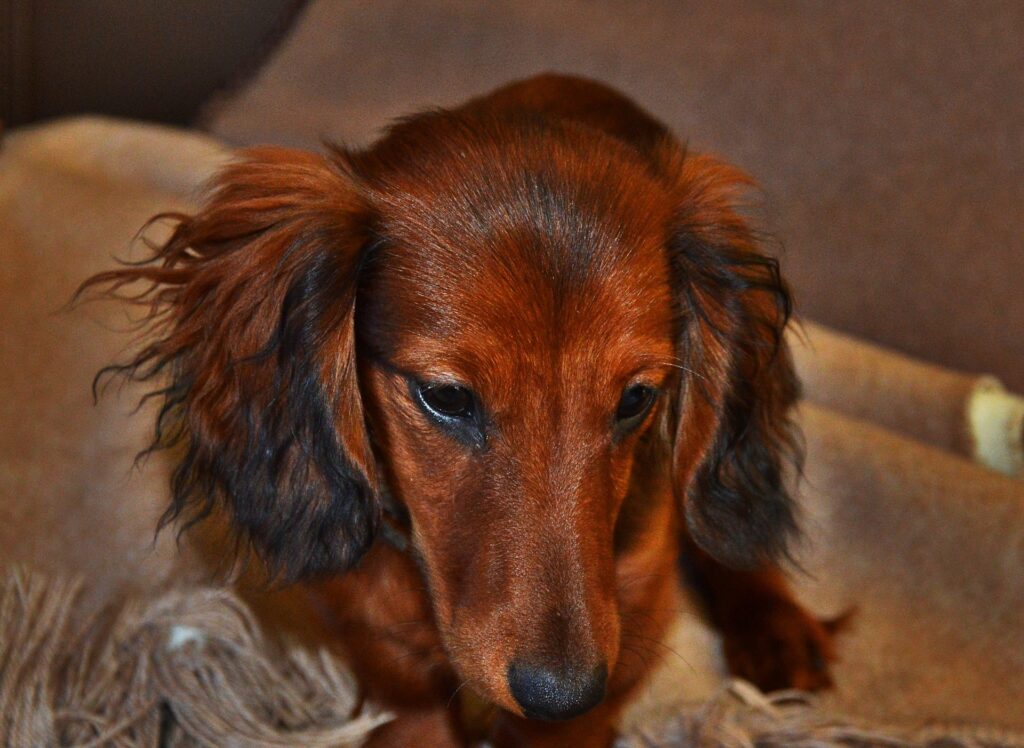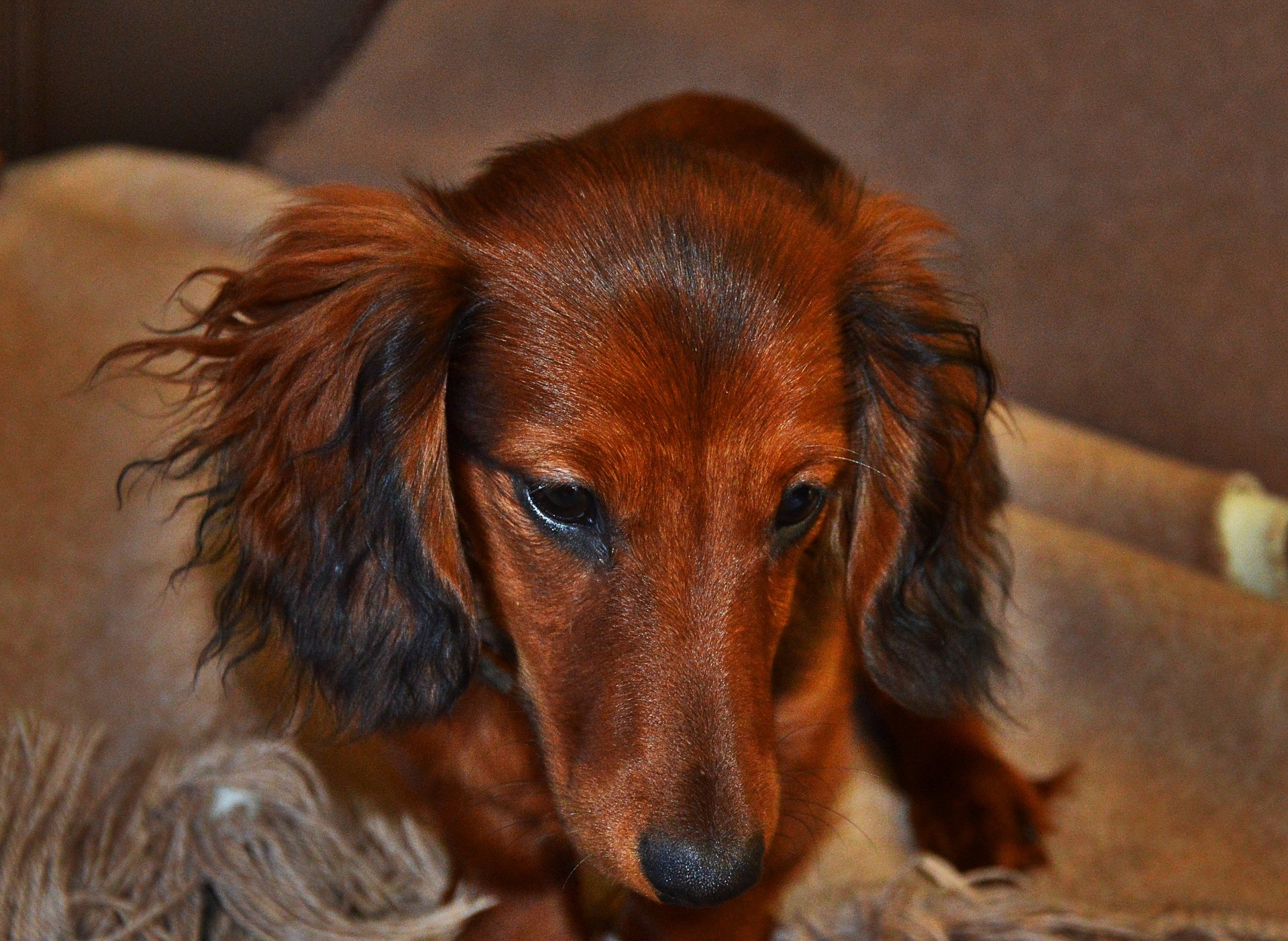Introduction
Long-haired dachshunds, affectionately known as wiener dogs, have captured the hearts of dog enthusiasts worldwide. Their long bodies and graceful locks give them an air of charm and playfulness.
History and Origins of the Long-Haired Dachshund
The origins of the dachshund date back to 15th century Europe, where it was developed in Germany for hunting purposes. The long-haired dachshund was likely developed by crossing with long-haired spaniels or other breeds. As a result of this crossbreeding, the dachshund developed a luxurious coat that provided additional protection during the winter months.
Distinctive Characteristics
Appearance and Size
Long-haired dachshunds typically have a sleek and elongated body that rests on short legs. Their coat is characterized by long, flowing hair that can come in various colors and patterns, including but not limited to cream, black and tan, red, and dapple.
These dogs are small to medium-sized,
- Weight range of 11 to 32 pounds
- Height of 8 to 9 inches at the shoulder
Behavior of Long-haired Dachshunds
Long-haired dachshunds are affectionate, friendly, and lively, with a curious nature and sense of humor that brings joy to individuals and families alike. Early and consistent training is essential for sociable dogs with occasional stubbornness. Long-Haired Dachshunds are known for their lively spirits and love for interactive games. Despite their boundless energy, they form strong bonds with their human companions because of their charming nature.
Caring for Your Long-Haired Dachshund
Grooming Needs
The luxurious coat of the long-haired dachshund requires regular grooming to maintain its beauty and health. Brushing several times a week helps prevent tangles and mats, while regular baths keep their coat clean and lustrous. Regular ear cleaning, nail trimming, and dental care are essential aspects of maintaining the overall health and well-being of your pet.
Exercise and Activity
Despite their small height, long-haired dachshunds are energetic and enjoy physical activity. Daily walks, interactive play sessions, and mentally stimulating games help keep pets healthy and engaged. However, their elongated spine makes them prone to back issues, so activities that minimize jumping are recommended.
Nutrition and Dietary Considerations
It’s important to give your long-haired dachshund a balanced and nutritious diet to maintain their health and vitality. High-quality dog food that meets their specific nutritional needs, portion control, and avoiding overfeeding are essential practices. It is recommended to seek advice from a veterinarian to establish the most suitable nutritional plan for your beloved pet.
Health and Wellness
Common Health Issues
Long-haired dachshunds, like other breeds, are prone to specific health conditions such as intervertebral disc disease (IVDD) that may cause back issues. Regular veterinary check-ups and maintaining a healthy weight can help decrease the risks of obesity, dental problems, and hip dysplasia.
Preventive Measures
To promote a long and healthy life for your long-haired dachshund, preventative measures are key. Regular exercise, a balanced diet, and proper dental hygiene can prevent health issues. Additionally, using ramps or stairs to avoid jumping and supporting their back during handling can help minimize the risk of spinal injuries.

Training and Socialization
Basic Commands
It’s important to train your long-haired dachshund for good behavior and a harmonious relationship. Teaching commands like “stay” and “come” can be achieved through positive reinforcement techniques. It is important to be consistent, patient, and persistent. Gentle guidance is key to success.
Socializing Your Long-Haired Dachshund
It is essential to socialize your dachshund early on to promote positive interactions with other dogs and people. Introducing them to various environments, sounds, and experiences during their early stages can prevent shyness or aggressive behavior as they grow.
Long-Haired Dachshund in Families
Compatibility with Children and Other Pets
Long-haired dachshunds are generally well-suited for families with children and other pets. However, due to their elongated bodies, they may be more delicate and open to accidental injury, so supervision during playtime is important. Proper introductions and positive interactions can foster strong bonds between your dachshund and other family members, including four-legged ones.
Creating a Happy Home Environment
To ensure a happy and fulfilling life for your long-haired dachshund, provide a stimulating and loving home environment. Engage them in regular play, offer healthy mental activities, and provide a comfortable space for relaxation. Your dachshund’s happiness and well-being are closely tied to the love and care they receive from you.
Breed-Specific Regulations and Considerations
Before bringing a long-haired dachshund into your home, it’s important to be aware of any breed-specific regulations or considerations in your area. It’s important to research breed restrictions in your region to ensure a legal adoption process.
Choosing Your Long-Haired Dachshund
When choosing a long-haired dachshund, it is important to take into account your lifestyle, living situation, and the breed’s needs. Adopting from a reputable breeder or rescue organization ensures that you are welcoming a healthy and well-cared-for dog into your family. It is important to ask questions in order to make informed decisions. To summarize, it is crucial to gather information through questioning to arrive at a well-informed decision.
Physical Characteristics:
The Long-Haired Dachshund stands out with its unique and elegant appearance, prominently defined by its long and flowing coat. This distinctive trait adds a touch of grace to their compact frame. Their silky fur can be wavy, creating a striking visual appeal. Originally bred in Germany for hunting, they have a compact build and elongated body that suits their historical role in tracking and hunting burrow-dwelling animals like badgers.
Temperament and Personality:
Beyond their physical charm, Long-Haired Dachshunds are celebrated for their friendly and affectionate nature. Despite their hunting lineage, these dogs have adapted seamlessly to domestic life, forming strong bonds with their human companions. Their loyalty is a standout trait, and they are known to be eager to please. Playful and alert, Long-Haired Dachshunds also excel as watchdogs, using their distinctive bark to announce the presence of visitors. With proper care, these dogs become cherished family pets, offering a harmonious blend of elegance and spirited companionship.
Frequently Asked Questions (FAQs)
Are long-haired dachshunds hypoallergenic?
Long-haired dachshunds are not considered hypoallergenic, as they still shed dander and hair, which can trigger allergies in sensitive individuals.
Do long-haired dachshunds get along with other pets?
Yes, with proper socialization, long-haired dachshunds can get along well with other pets, including dogs and cats.
Are long-haired dachshunds easy to train?
Long-haired dachshunds are intelligent but can be a bit stubborn. Patient and consistent training methods yield the best results.
Do long-haired dachshunds require professional grooming?
While regular at-home grooming is essential, occasional professional grooming can help maintain their coat’s health and appearance.
How much exercise do long-haired dachshunds need?
Long-haired dachshunds require daily exercise, including walks and playtime, to stay healthy and happy. Be cautious with activities that strain their back.
Conclusion
In conclusion, long-haired dachshunds make wonderful family pets due to their elegant appearance, playful nature, and loving personality. By learning about their history, characteristics, and care requirements, you can ensure a happy and fulfilling life for your long-hair dachshund companion.
